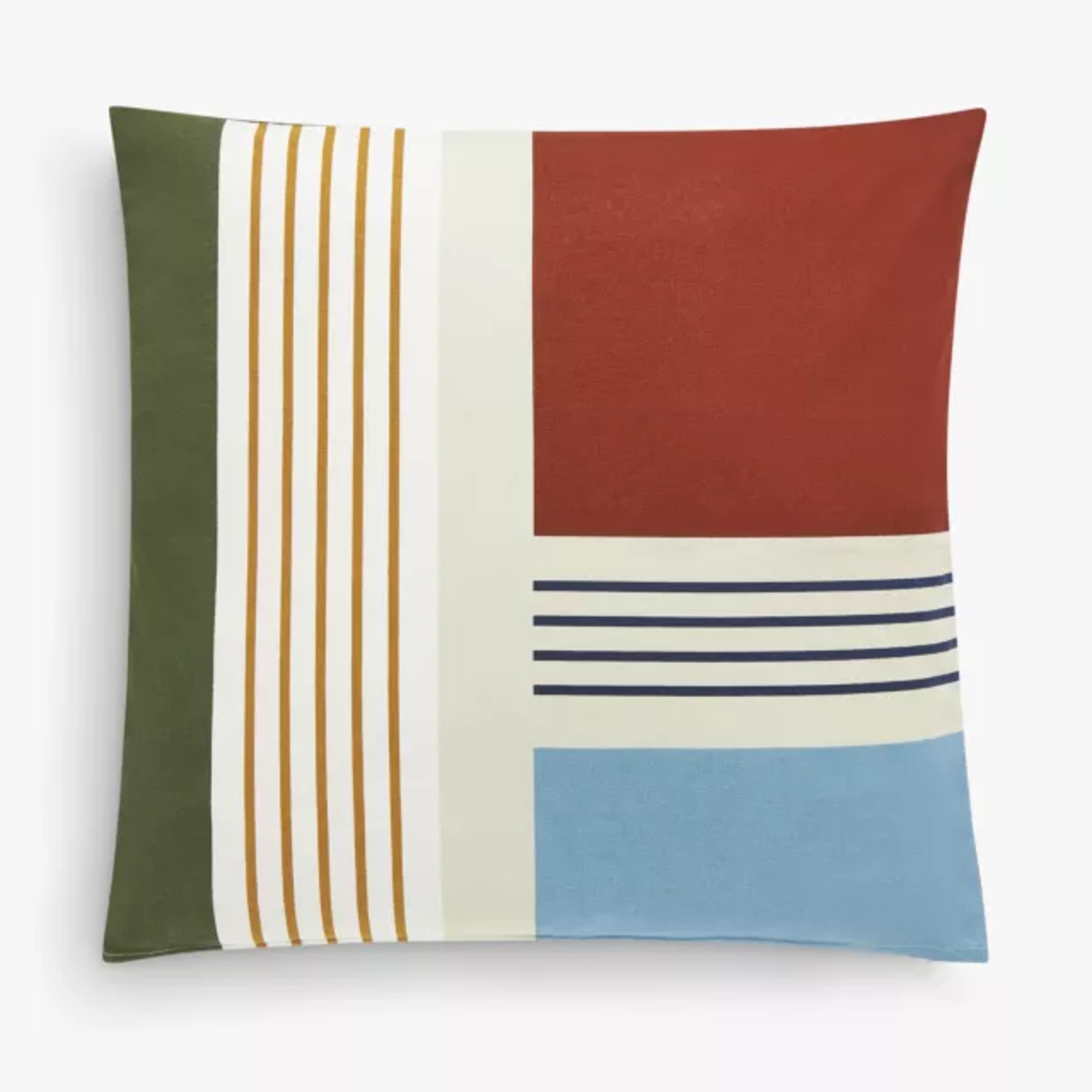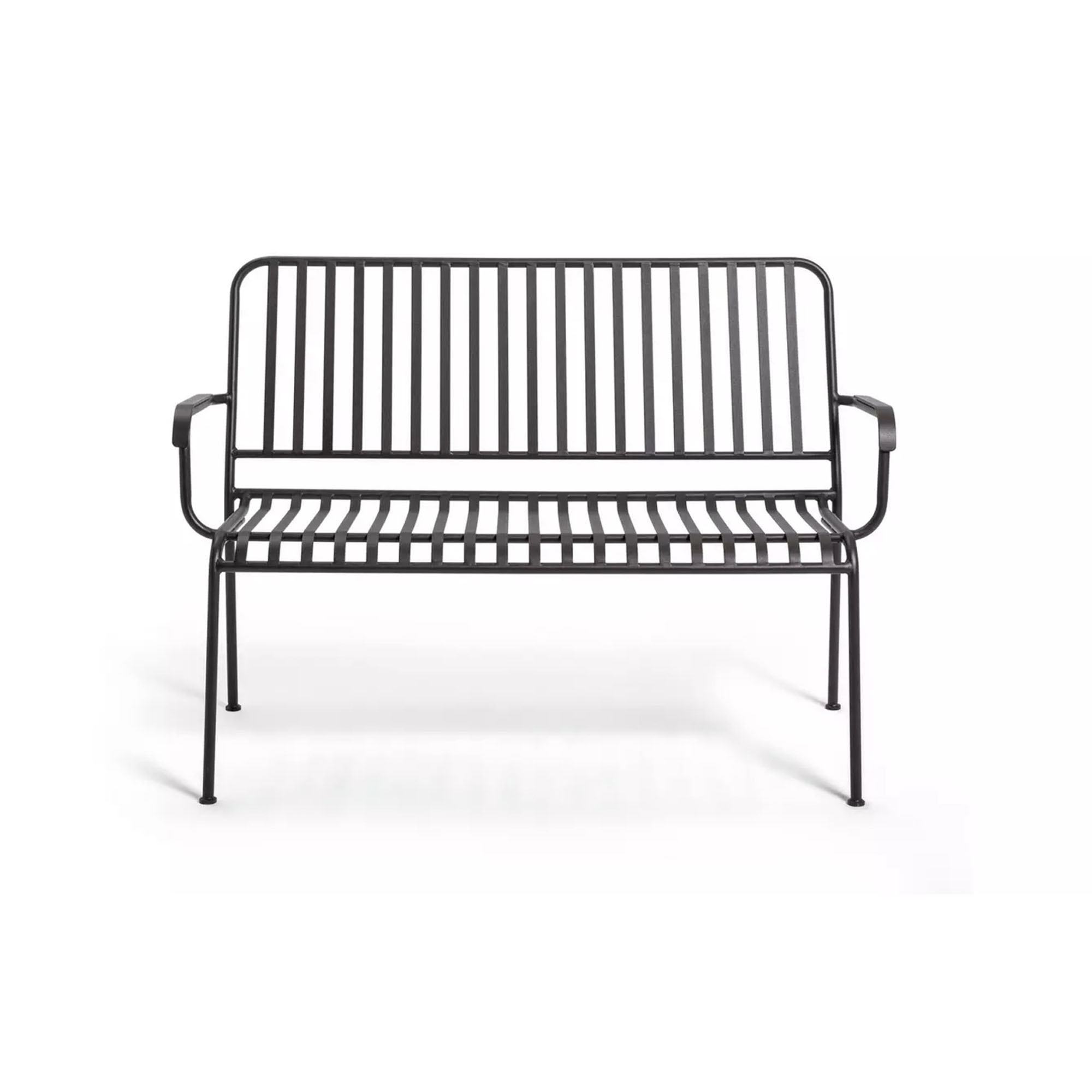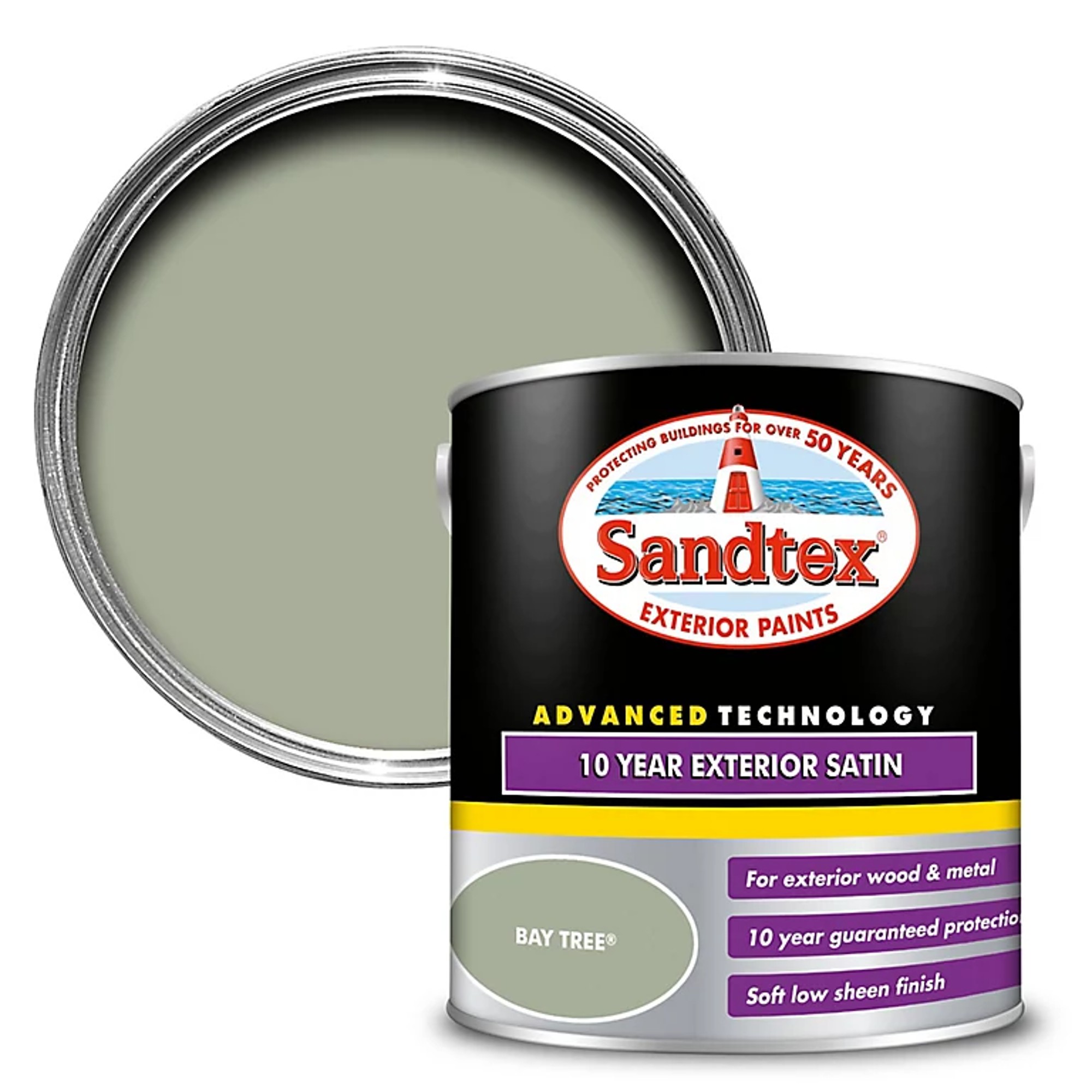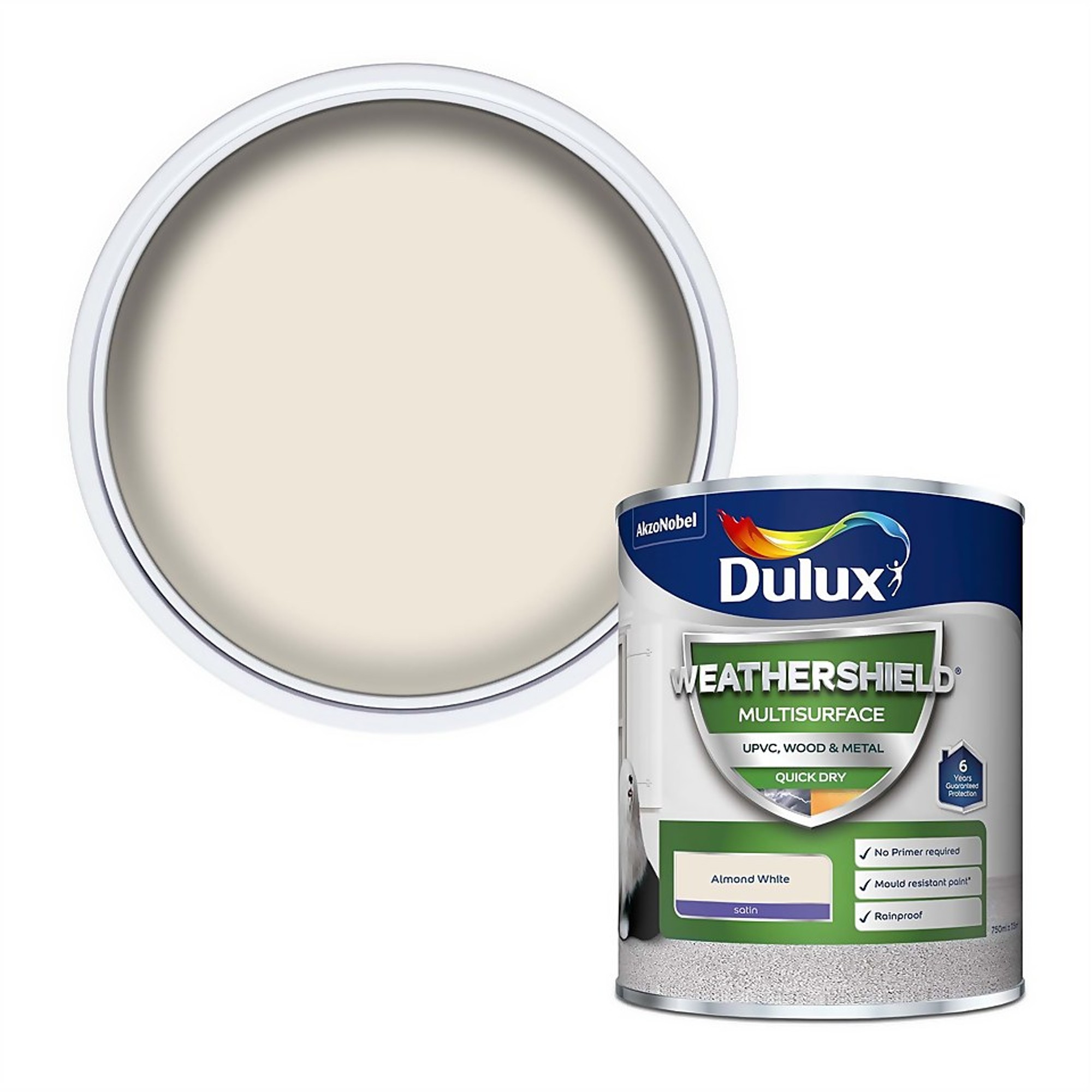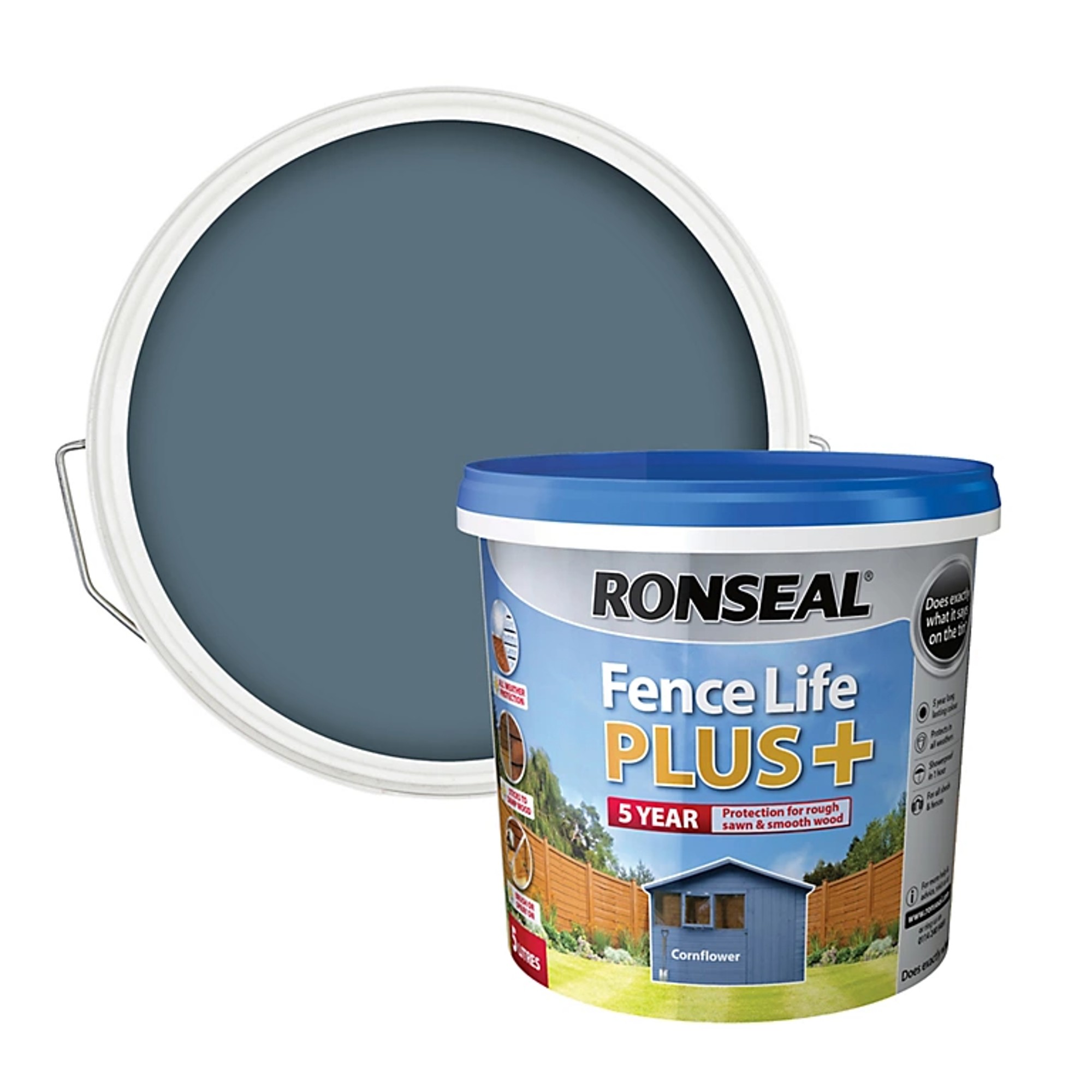Garden bench ideas – 6 ways to bring style, comfort and cosiness to your outdoor seating
Turn your outdoor space into a stylish, whimsical and romantic refuge


EDITOR’S NOTE: An earlier version of this article included a quote from a purported expert whose credentials we have not been able to verify. The quote has been removed. We regret this lapse in our verification process and have updated our internal protocols to reduce the risk of recurrence.
There are many ways in which you can create cosy nooks in your garden or on your patio, no matter its size. But including some form of seating is a must. And nothing is as charmingly cosy as a garden bench, especially when you’re equipped with the right garden bench ideas to inject your outdoor space with style, as well as comfort.
Whether you’re looking to invest in one of the best garden benches on the market - and are wondering what to go for - or you just want to update your existing garden bench, there’s something for everyone in this expert-approved list of tips.
Reminiscent of whimsically romantic park benches, garden benches make for the perfect garden seating idea, which can be the base for anything from a fairytale-like setting to an uber modern garden idea, depending on the look you’re going for in your garden.
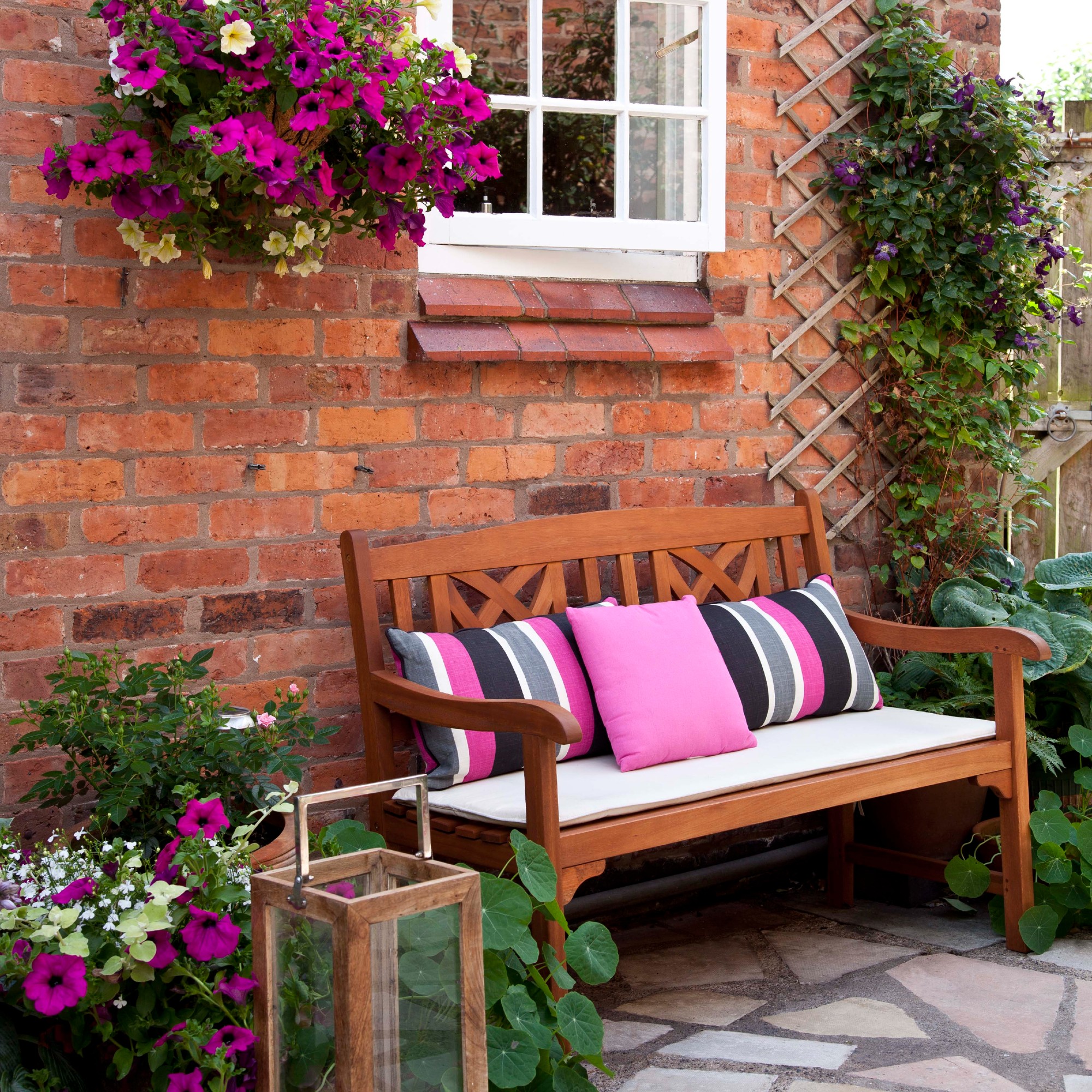
Garden bench ideas
‘A garden bench is the perfect seating solution for any outside space,’ says Emily Murison from Gates Garden Centre. ‘It can be left outside all year round, ready to use whenever you want, and you won’t need to worry about storing it over winter.’
So what boxes should a good garden bench tick? There are a few, actually. It should be a focal point in your garden, inviting you to sit and take in the sights, scents and sounds of your garden.
But as well as being inviting and stylish, it should also be hardwearing and comfortable. Among other things…
1. Choose the right size for your garden
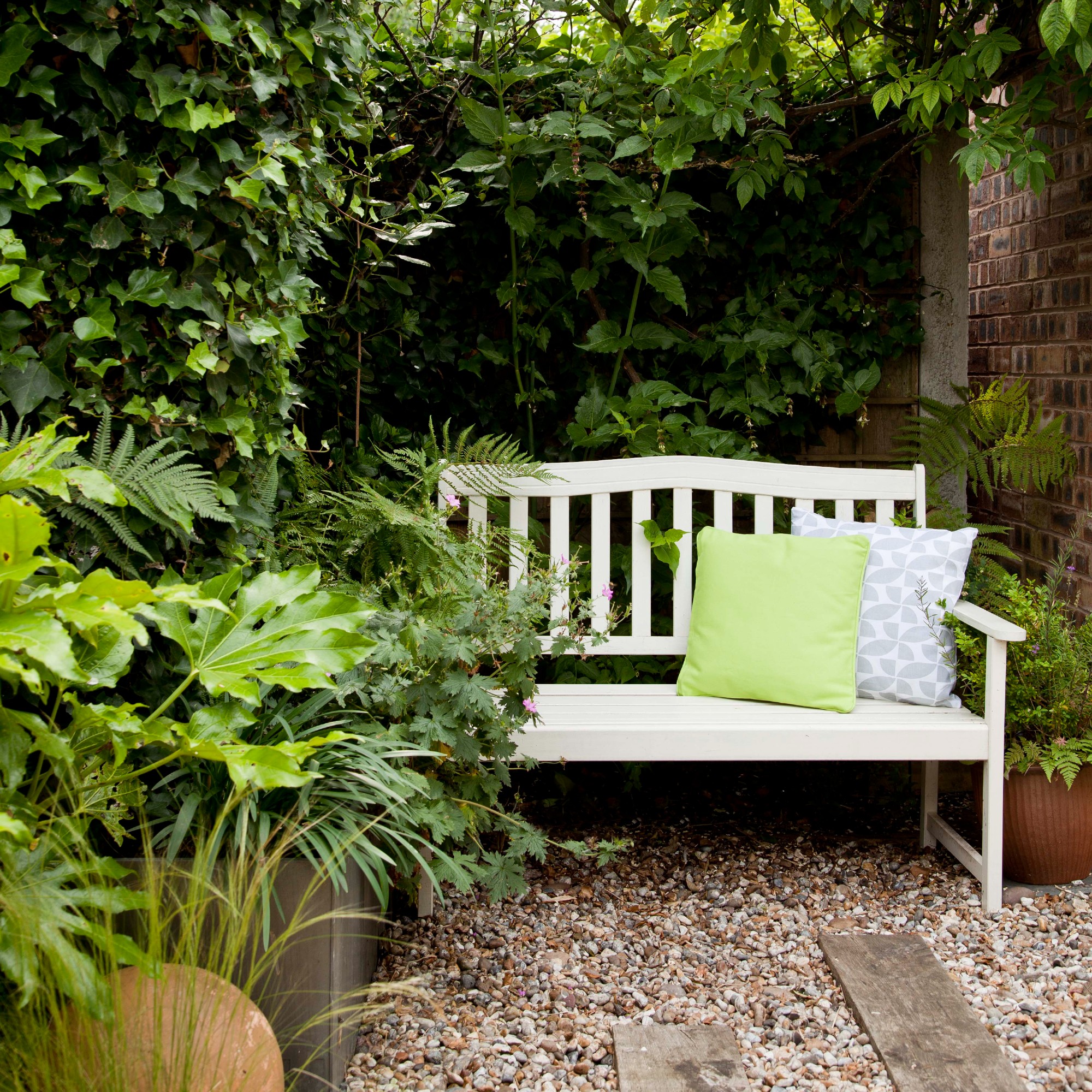
Proportion is an important aspect in choosing the right garden bench for you and your individual space. You don’t want anything too big and overwhelming or too small that will make zero impact and get lost in the garden. It’s in many ways similar to choosing the right sofa for your living room.
Sign up to our newsletter for style inspiration, real homes, project and garden advice and shopping know-how
You want it to be large enough to seat two or three people comfortably but not so large that it dominates the garden. Similarly, if you have a big garden a small bench may look dwarfed.
But if you do happen to be lucky enough to boast a large garden, which you clearly won’t be able to fill with a garden bench, then try to make it a focal point instead by employing one or more of the following ideas.
2. Add cushions
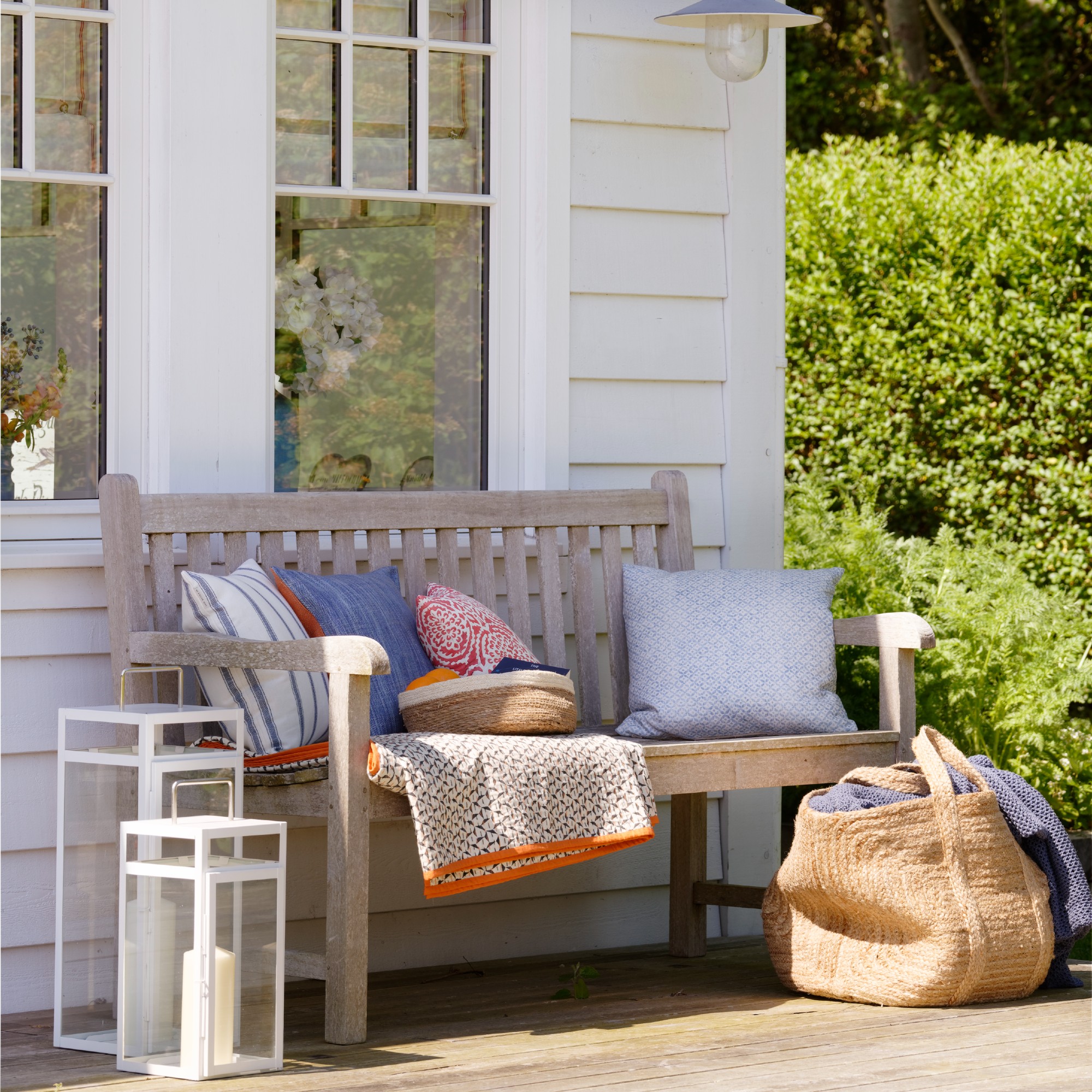
Adding cushions to your bench is an easy way to bring colour, texture and pattern to your garden. It’s also the perfect option if you don’t want to commit to one idea long term as you can easily swap them out whenever you get tired of the style. Of course, opt for outdoor cushions that can take on the temperamental British weather.
The striped frilled cushion trend has been a staple in interiors for over a year now. But now, you can get in a fit-for-outdoor version, too, from the likes of Dunelm.
3. Create a pleasant view
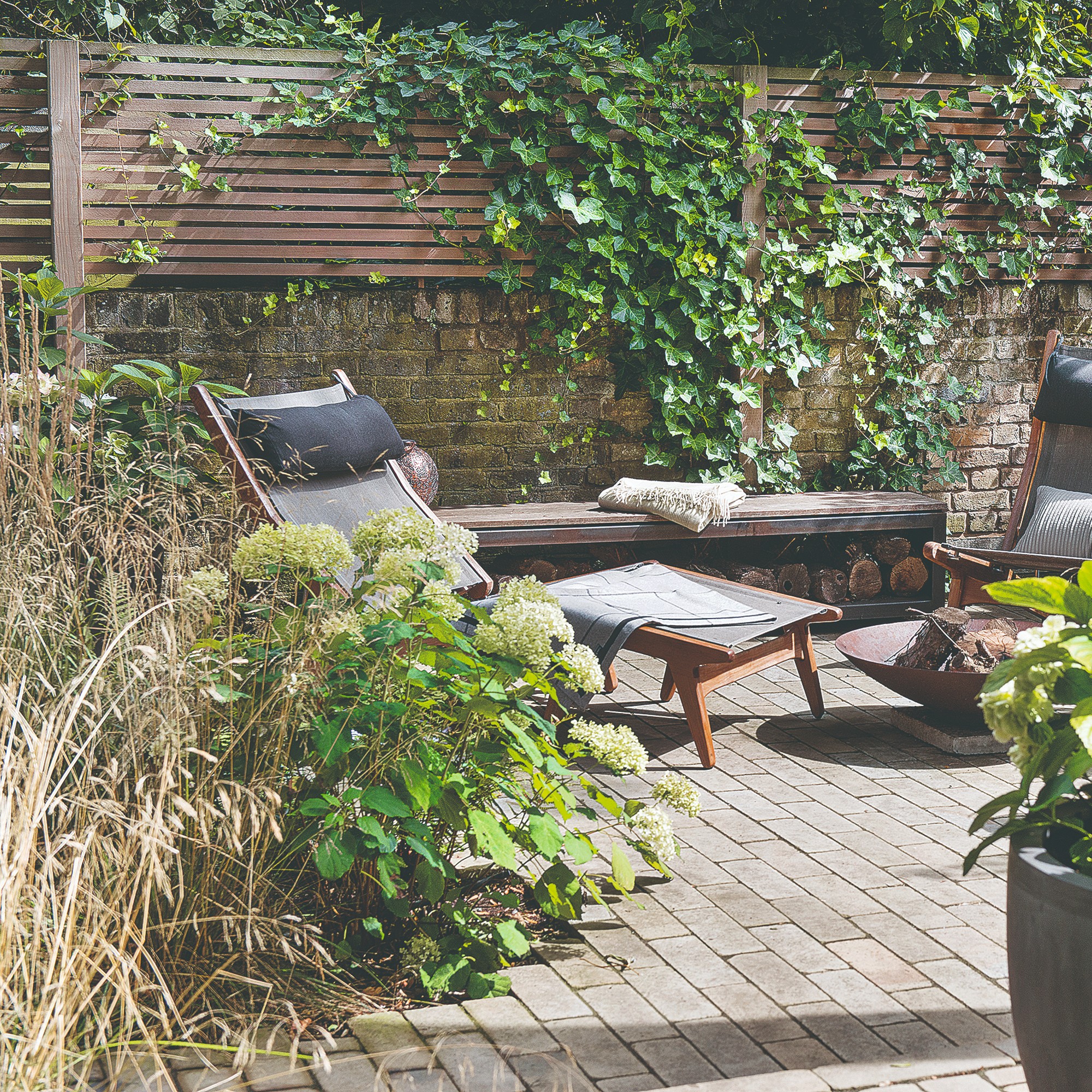
When sitting on your garden bench, you don’t want to be looking at a wall, the bins or something similarly unpleasant. You need to think about the right positioning when choosing the spot where your bench is going to live for the foreseeable future. A nice view is a must.
‘Placement is key so always consider the bench’s surroundings; what garden features surround it,' says Jenny Davis of Forest Garden. 'Consider utilising plants to create a luscious backdrop. Or consider placing it under an arbour. This will offer shade against the sun and create an elegant focal point and resting area.’
4. Pay close attention to the material
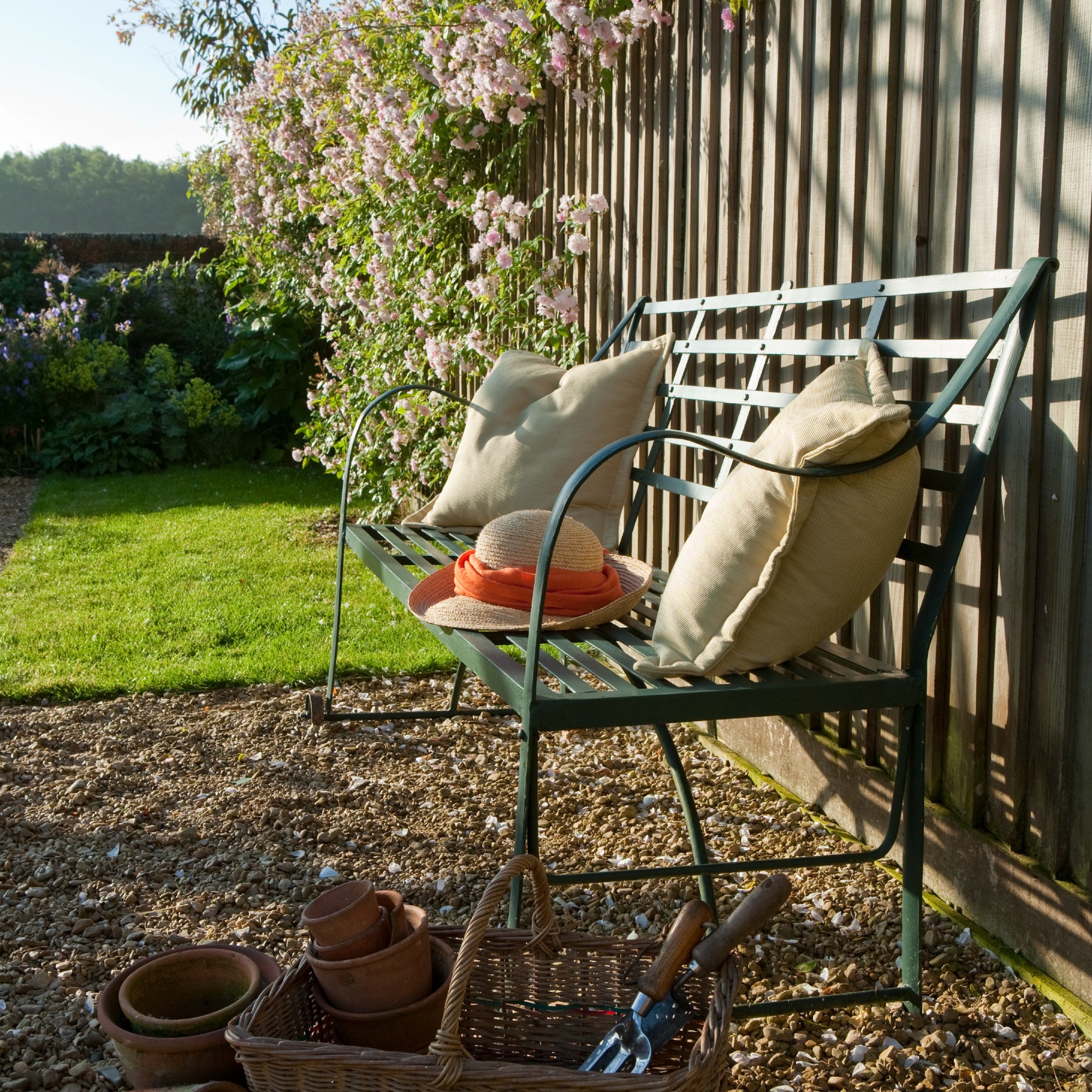
There are three garden bench materials that are most common – wood, metal and plastic. And which one is right for you will depend on your preferences.
‘High quality hardwoods, such as teak and oak, make the ideal material for garden benches,’ says Tom Clifford at Gardenstone. ‘Hardwoods are increasingly more durable and resistant to outdoor conditions than regular woods. In particular, teak is highly resistant to termites due to the natural oils it produces. Although hardwood benches are significantly more expensive it works out more economical in the long-run due to their long lasting nature.’ So do some homework into the most durable garden furniture before you buy.
Wood also tends to be the warmest of the materials and therefore more comfortable, especially when compared to its metal counterpart.
If you're weighing up wood vs metal garden furniture, then metal does have benefits. ‘If you’re worried about weathering, wrought iron is the perfect choice due to its durability and resistance to weathering. Wrought iron requires little to no maintenance so it is good for busy homeowners, it may develop rust overtime but this is usually minimal and can be removed using a wire brush,’ Tom adds.
And finally, there’s plastic, which can actually look very chic and can trick the eye into believing it’s wood. They require little maintenance beyond a wipe down at the beginning of the season with a damp cloth.
However, ‘plastic benches may be lightweight and easier to move around the garden, but there is the danger of damage during high winds,' adds Jenny. 'Plus, plastic will fade in the sun.'
5. Paint it

A lick of paint can do wonders, especially when it comes to tired old garden benches constantly exposed to the elements. For the the ideal budget garden idea look at painting garden furniture.
‘Wooden benches are known to age overtime when exposed to air and moisture. To renew your bench and bring it back to life I recommend varnishing or painting the wood,' advises Tom.
'Start by cleaning and sanding down your garden bench and then go in with your preferred colour or finish. Not only will varnish or paint completely revitalise the look of your wooden bench but it will also help to protect from weathering.'
But it’s not just wooden benches that can benefit from this easy fix. Metal benches can also be easily updated with a coat of paint.
‘Consider painting or staining the bench to complement the garden's theme or surrounding decor,’ Emily says. ‘If you decide to paint your wooden bench, try testing an area underneath first to make sure you like the colour and use an oil-based paint to prevent flaking.’
6. Make sure it’s comfortable
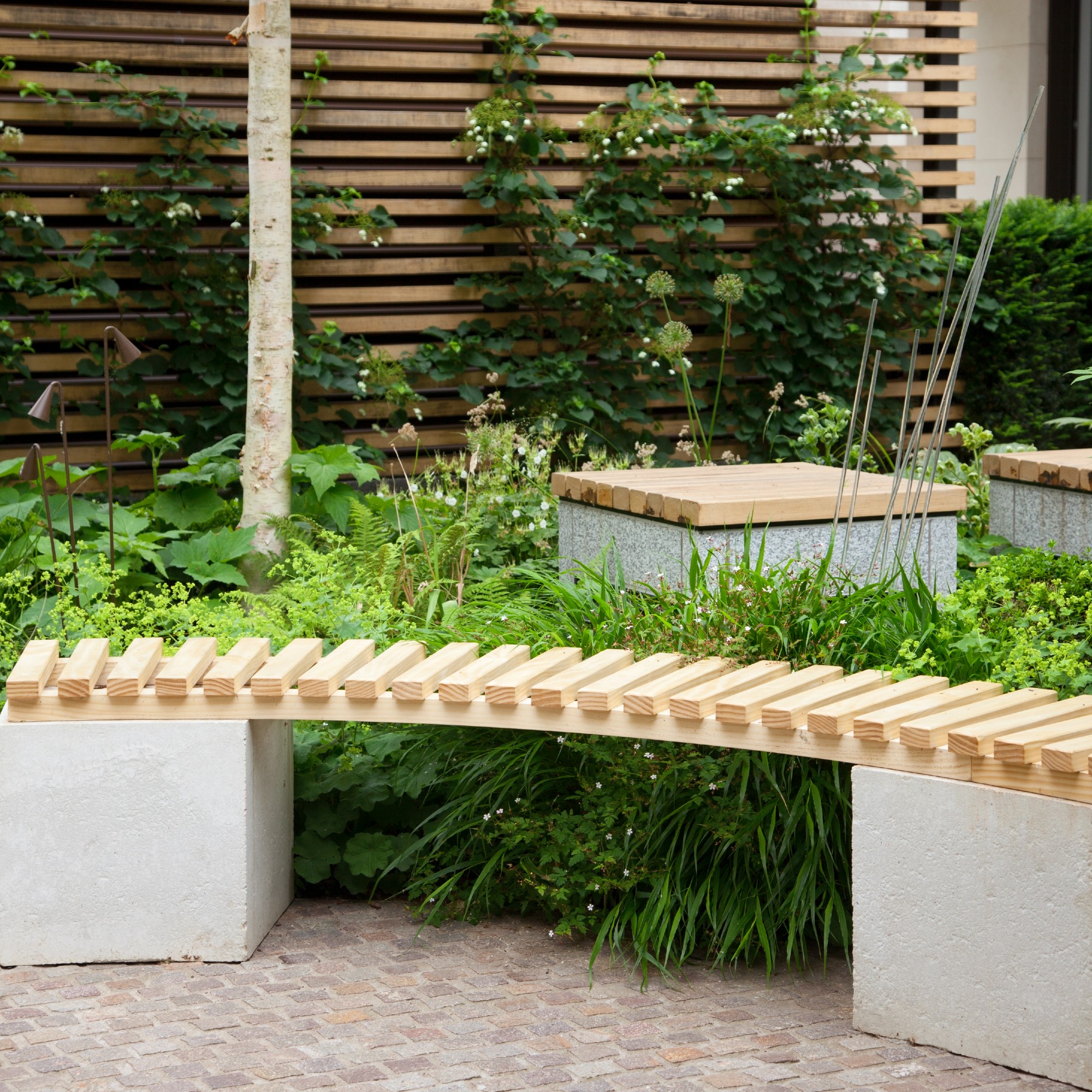
‘If you plan on using your garden bench often, then comfort is key. If your bench is uncomfortable it is unlikely you will want to use it much,’ Tom says.
And one of the first points he makes is to opt for a bench design with a backrest, despite how cool and contemporary those without them look.
Similarly, Jenny further warns about choosing a metal bench which can lead to some discomfort, ‘Metals can absorb heat, and this can make them uncomfortable and on some occasions, even dangerous to touch.’
FAQs
How do you anchor a garden bench to the ground?
Depending on the design and material, many garden benches don’t necessarily need to be anchored to the ground. But if you want the safety and security, this is what you need to do.
‘Use concrete anchors, ground spikes, or buried posts to secure the bench firmly. This prevents movement or tipping, especially in windy conditions, keeping your garden bench safe and stable,’ recommends Emily from Gates Garden Centre.
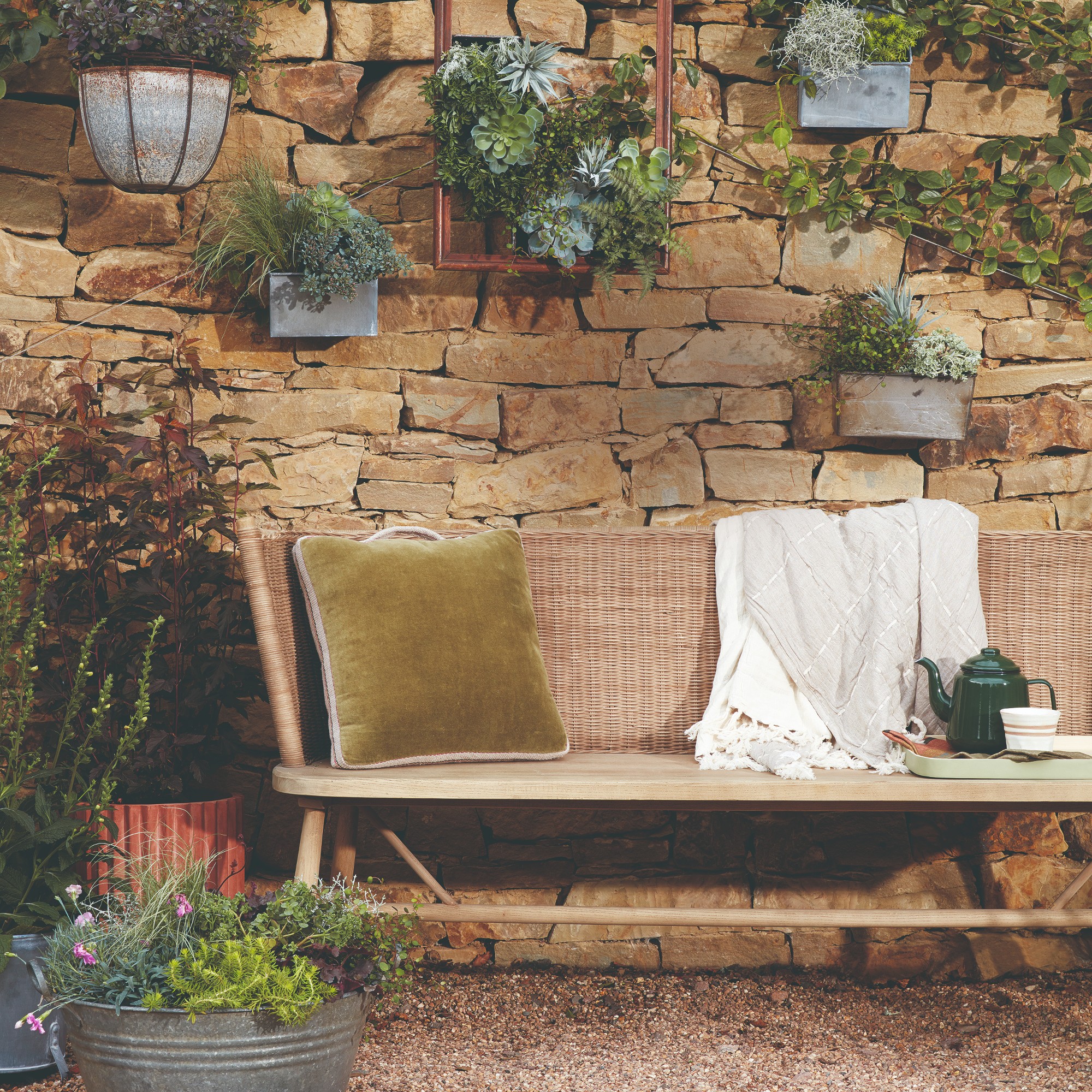
What is the best wood for outdoor benches?
Slow-growing hardwood varieties are better for garden benches than fast-growing softwood timber, albeit it is pricier. And the best hardwood that all our experts agree on is teak.
‘Sustainable hardwood like teak is a great choice for patios and gardens,' notes garden pro Emily. 'It's long lasting, durable and can withstand extreme weather conditions in the UK. Sustainable teak sourced from managed plantations is also kinder to the environment, as it is not sourced from illegal deforestation.'
We can’t wait to see what you do to enhance the style, comfort and cosiness of your garden bench.

Sara Hesikova has been a Content Editor at Ideal Home since June 2024, starting at the title as a News Writer in July 2023. She is now also the Ideal Home Certified Expert in Training on Furniture, and so far has tested over 150 different sofas.
Graduating from London College of Fashion with a bachelor’s degree in fashion journalism in 2016, she got her start in niche fashion and lifestyle magazines like Glass and Alvar as a writer and editor before making the leap into interiors, working with the likes of 91 Magazine and copywriting for luxury bed linen brand Yves Delorme among others.


